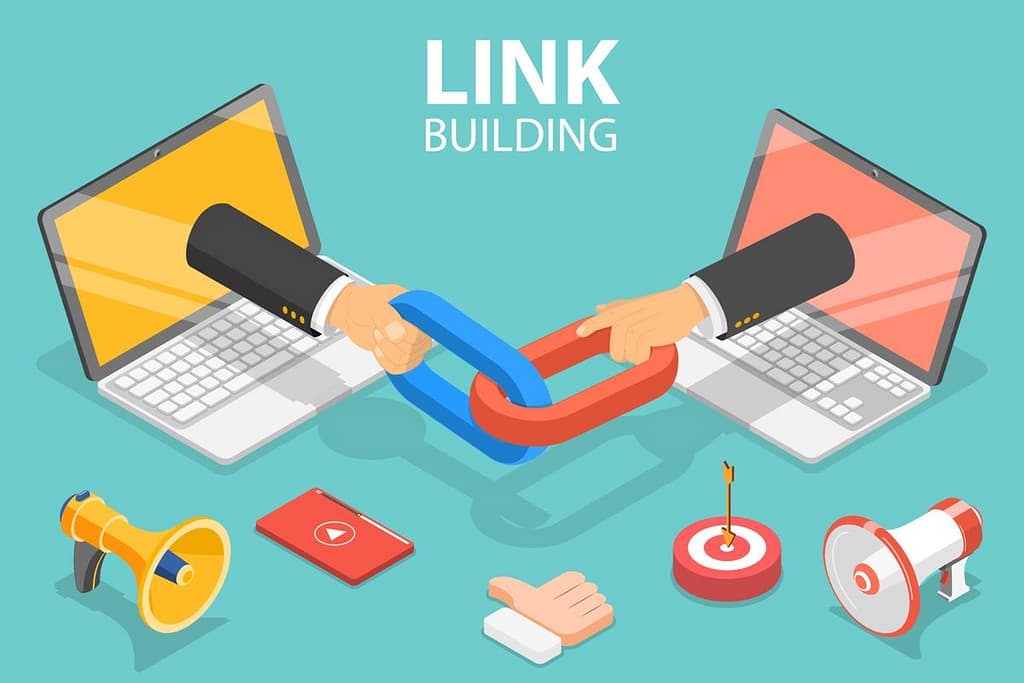What are Backlinks ?
Backlinks, also known as inbound links or incoming links, are links from one website to another. They play a crucial role in search engine optimization (SEO) and are an essential factor in determining a website’s authority and credibility. When a website links to another website, it’s seen as a vote of confidence or endorsement from the linking site.

How Does It Works ?
Backlinks work as a way for websites to reference or link to each other on the internet. They play a significant role in how search engines like Google evaluate and rank websites. Here’s how the process of backlinks works:
- Link Creation: When one website wants to refer to or cite information from another website, it can create a hyperlink (backlink) to the other website. This hyperlink is typically embedded in the text or content of the linking site.
- Link Context: The context in which the link is placed matters. Search engines analyze the content around the link to understand the relevance of the linked page to the linking page.
- Search Engine Crawling: Search engines use automated bots (crawlers) to navigate the web and index web pages. When these crawlers encounter a hyperlink, they follow the link to the linked page. This is how search engines discover new pages and content.
- Page Evaluation: Upon reaching the linked page, search engines assess various factors, including the quality of the content, the authority of the linked page, and the relevance to the linking page.
- Authority and Trust: Search engines consider the authority and trustworthiness of the linking website. If the linking site is reputable and relevant to the linked content, the backlink carries more weight in terms of SEO.
- Link Juice and Ranking Impact: When a reputable site links to another site, it’s seen as a vote of confidence. The linked site gains some of the linking site’s authority, a concept known as “link juice.” This can positively impact the linked site’s search engine ranking.
- Anchor Text: The anchor text—the clickable text of the hyperlink—provides context to search engines about the linked page’s content. Descriptive and relevant anchor text can enhance the SEO value of the backlink.
- Quality vs. Quantity: Having numerous backlinks is beneficial, but quality is more important than quantity. A few high-quality backlinks from authoritative sources can have a more significant impact on a site’s SEO than numerous low-quality links.
- Natural vs. Unnatural Links: Search engines reward natural backlinks earned through valuable content and genuine interactions. Unnatural or manipulative backlinks (such as buying links) can lead to penalties and harm a site’s ranking.
- Ongoing Evaluation: Search engines regularly assess the quality and relevance of backlinks. As the internet evolves, the value of certain backlinks may change, so ongoing link maintenance is crucial.
Types of Backlinks ?
Backlinks come in various types, each with its own characteristics and impact on search engine optimization (SEO). Here are some common types of backlinks
- Natural Editorial Links: Earned due to content value and relevance, most authentic type.
- Guest Posting Links: Gained through contributing content to other sites.
- Resource Links: From authoritative sources treating your content as a valuable resource.
- Broken Link Building: Replacing broken links with your relevant content.
- Social Media Links: Drive traffic and visibility, though “nofollow” for SEO.
How To Get Backlinks ?

Getting high-quality backlinks requires a strategic approach that focuses on creating valuable content and building relationships within your industry. Here's a step-by-step guide on how to get backlinks:
- Create Quality Content: Develop valuable and engaging content that naturally attracts others to link to it.
- Guest Posting: Write for authoritative sites in your niche and secure backlinks within your contributed content.
- Outreach and Networking: Build relationships with industry influencers and website owners for potential backlink opportunities.
- Broken Link Building: Identify broken links on other sites and suggest your content as a replacement to earn backlinks.
- Promotion and Sharing: Share your content across platforms to increase visibility, encouraging others to link to it




